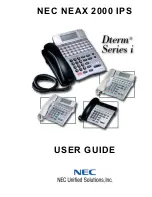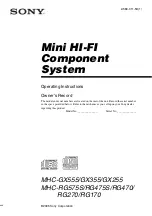
Preliminary 01/02
Two fresh alkaline batteries can last up to 12 hours in use, but in order to ensure optimum
performance, it is recommended that the battery be replaced after 8-10 hours of use.
2. Selecting Input for Operation
The UB-16 is equipped with an
INPUT SELECTOR SWITCH (21)
in the battery
compartment for selecting the type of audio input you will be supplying to the
transmitter. Select from the choice of three positions:
GT
(for guitar, bass, etc.) /
HM
(for headworn mic)/
LT
(for lavalier mic).
3. Connecting the Audio Source
The UB-16 is provided with a
3.5 mm LOCKING JACK (22)
for connecting the audio
input selected. Connect either the
INSTRUMENT CORD (23)
or the
HEADWORN
MIC (24)
or
LAVALIER MIC CORD (25)
as desired, according to the input selected.
(Note: Use only the input audio source as per the input selected with the AUDIO INPUT
SELECTOR SWITCH or the audio will not be optimal– a muddy or distorted sound may
result.)
To secure the connection, turn the slip ring on the plug clock wise to thread it on
the jack. To unplug, reverse the process. Slip the transmitter into a pocket or
CLIP (26)
it
on to your clothes or instrument strap (if using the UB-16 as an instrument transmitter).
4. Turning on the Transmitter
Turn on the UB-16 by sliding the
OFF/STANDBY/ON SWITCH (26)
to the
STANDBY position (transmitter on, audio muted) or the ON position (transmitter and
audio both on). The
BATTERY INDICATOR LED (27)
will give a single quick flash,
indicating usable battery strength. In the case of dead or low batteries, the LED either
will not go on at all or will stay on continuously, indicating that the batteries should be
replaced with fresh ones. To preserve battery life; turn the transmitter off when not in
use. Inside the cover, the channel number on the
CHANNEL LED DISPLAY (29)
will
extinguish in 10 seconds. The activity indicator “ “ or “ “ LED will remain on.
5. Selecting the Operating Frequency
In order for the system to operate properly the same channel (frequency of operation)
must be selected for the UB-16 transmitter as was chosen for the UHF-16 receiver. Press
either the
UP
or
DOWN CHANNEL SELECT BUTTON (28)
until the channel number
indicated on the 2-segment
CHANNEL LED DISPLAY (29)
matches that of the UHF-
16 receiver.
6. Selecting the
Tone Squelch™
Mode
Hold both the
UP
and
DOWN BUTTONS (28)
at the same time for 1 second. The Tone
Squelch™ will cycle from On to Off. See the
CHANNEL DISPLAY AND UP/DOWN
BUTTON OPERATION
section below.
7. Locking the Keyboard
To avoid accidental reconfiguration of the Channel setting or Tone Squelch™, the
keyboard can be locked buy holding both
UP
and
DOWN BUTTONS (28)
at the same
time for 3 seconds. See the
CHANNEL DISPLAY AND UP/DOWN BUTTON
OPERATION
section.
























